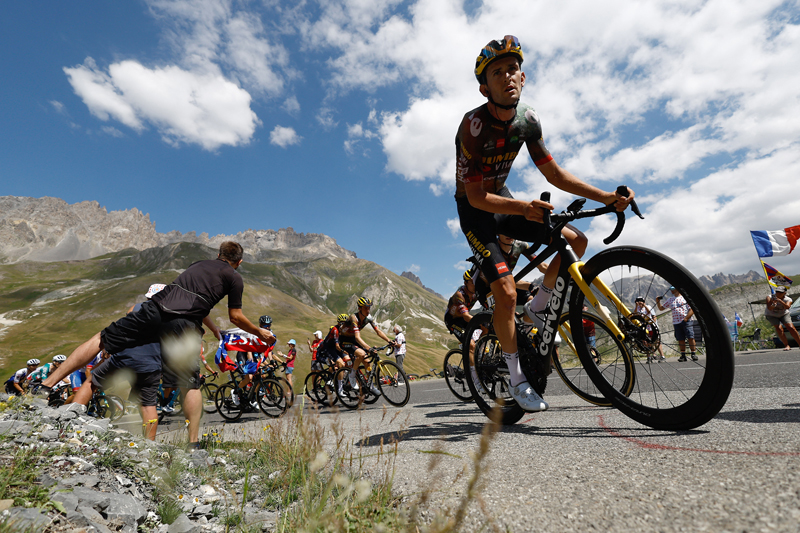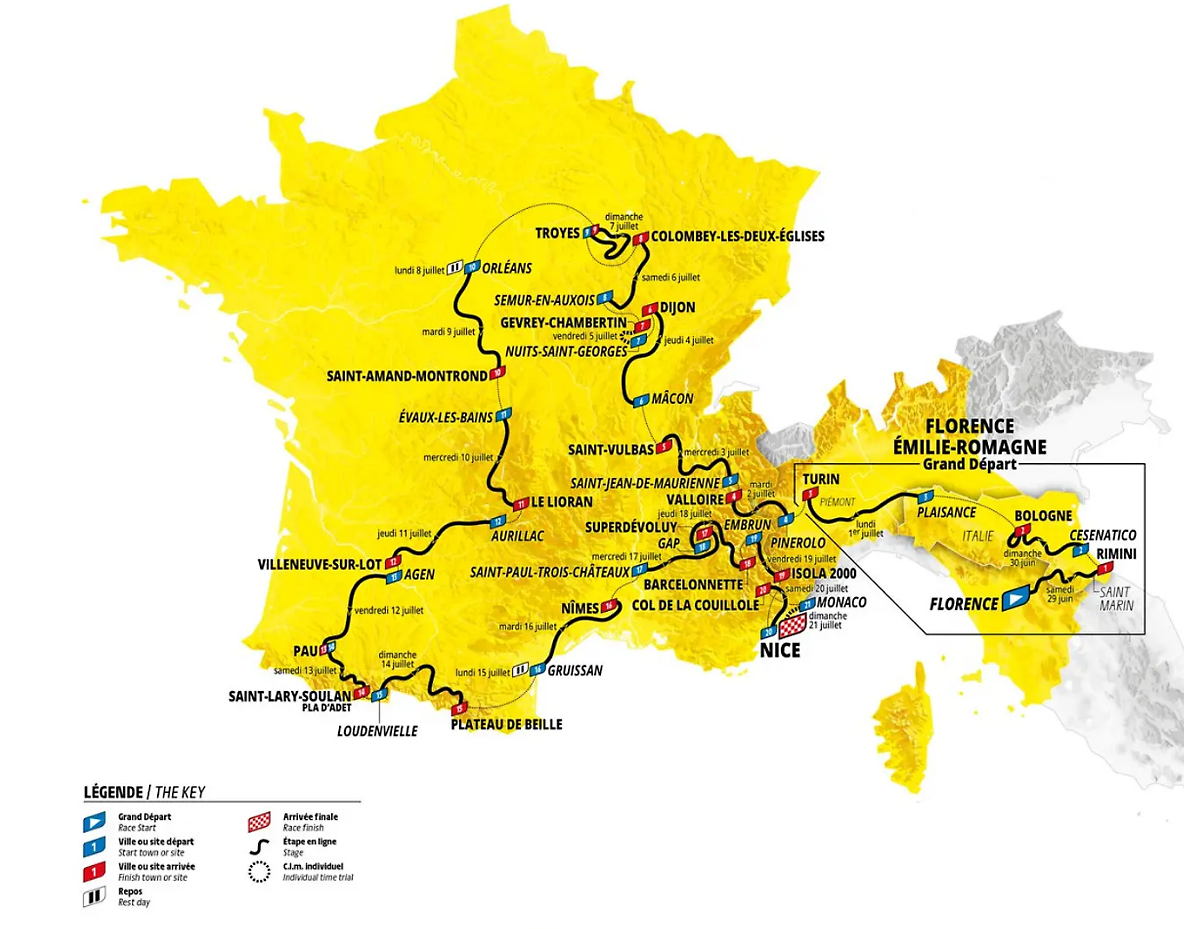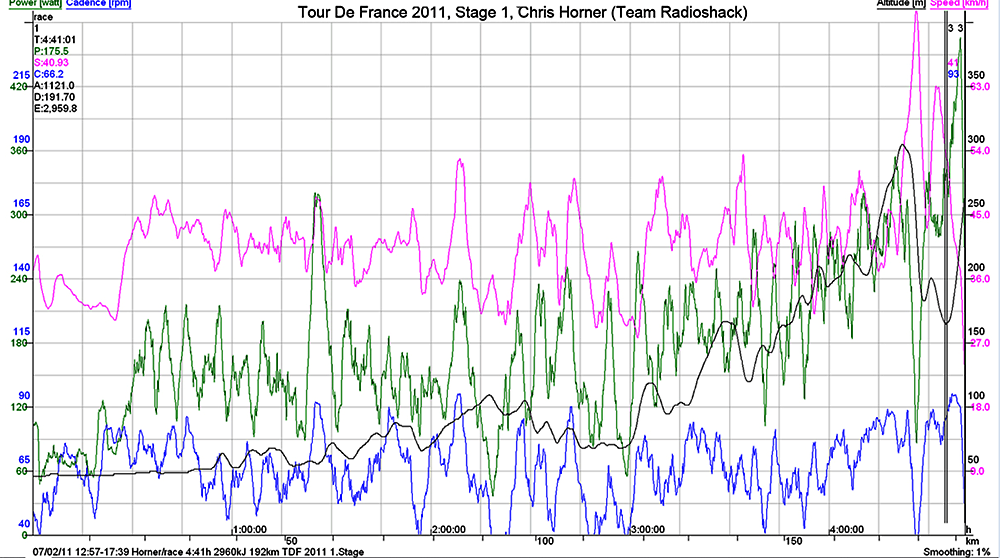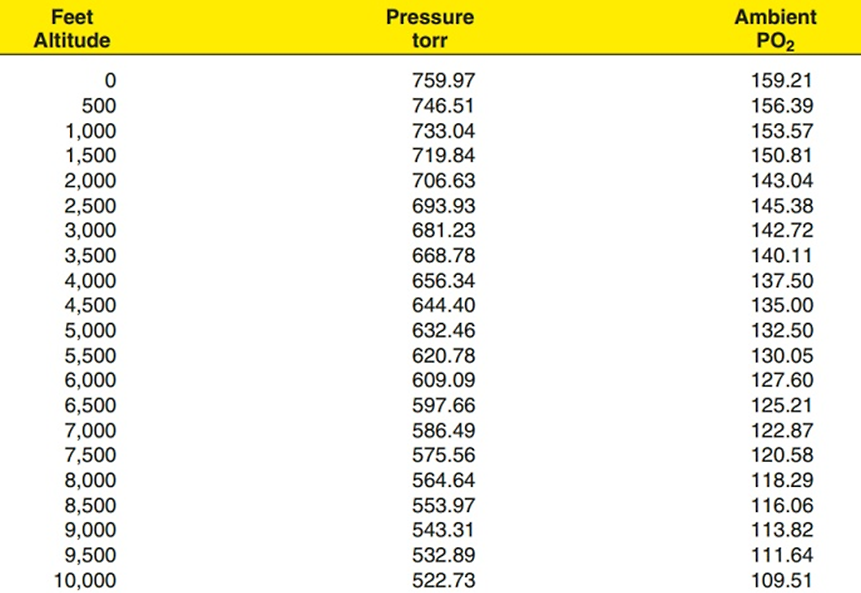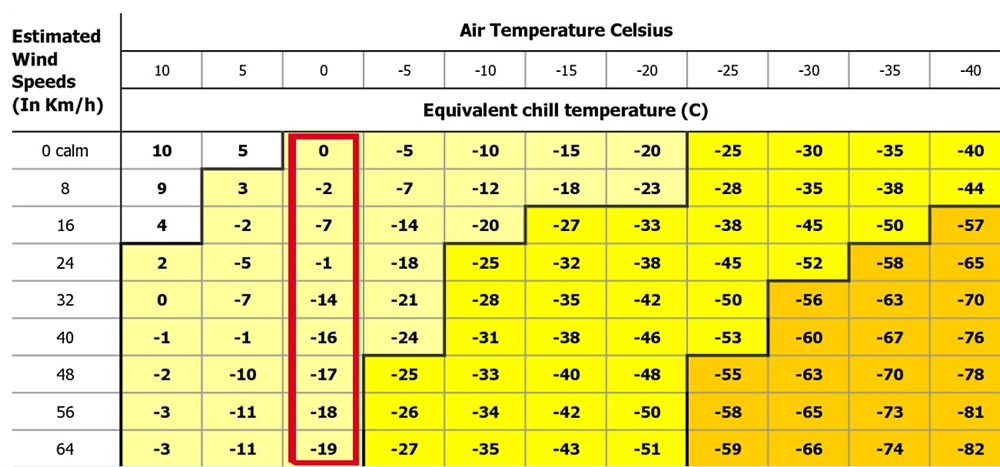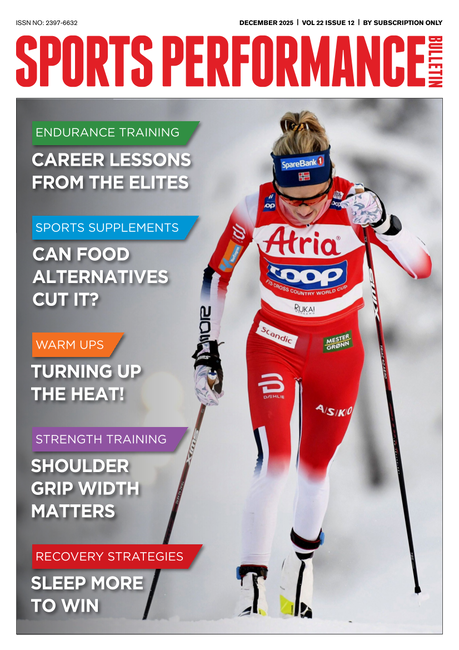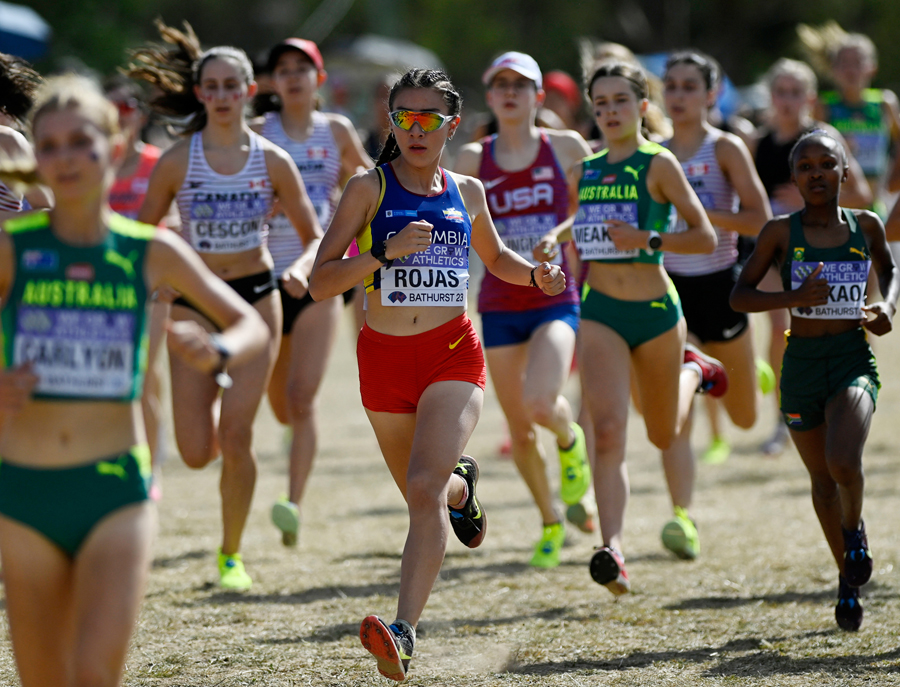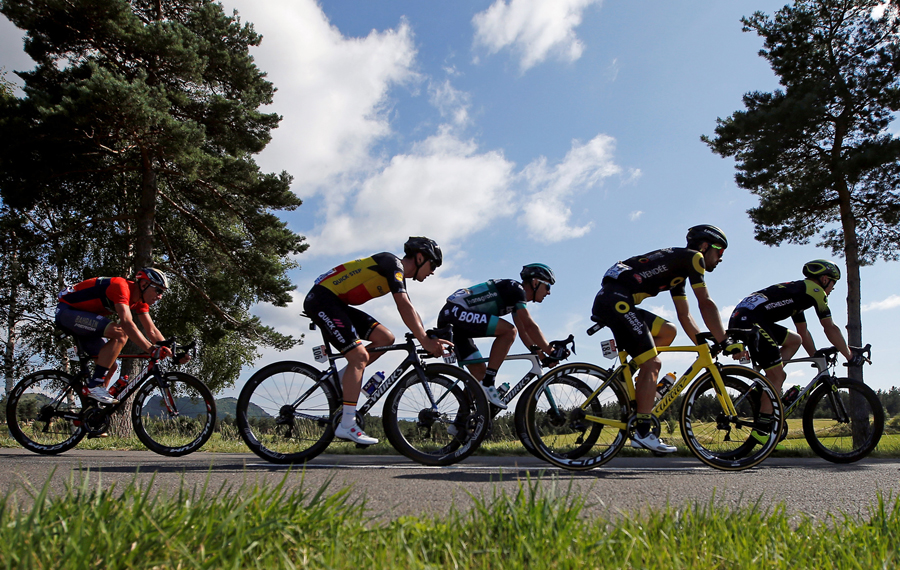You are viewing 1 of your 1 free articles. For unlimited access take a risk-free trial
Ultra endurance performance: lessons from pro cyclists
What athletic abilities does a pro cyclist need to perform in one of the major international Tour races? SPB looks at some of physical challenges faced by riders, explains why winning a mountain stage requires exceptional ability (and guts), and looks at the implications for amateur riders
April marks the beginning of the 2024 cycle racing season, and by the time you read this, the famous and incredibly demanding 260km Paris-Roubaix race will already have a winner. However, of all the major cycling tours, it is the Tour de France that is regarded as the pinnacle of cycling performance and drama. The 2024 and 111th Tour de France starts in Florence in Italy on June 29th, and finishes 21 stages and two rest days later, in Nice on July 21 (see figure 1). This year’s race covers over 3,400 kilometres (2,112 miles) transiting through Italy, San Marino, Monaco and France, with a total of 52,230m (171,360ft) of elevation gain!
This tour in particular has a heavy focus on hills and mountains. The opening few days in Italy involve a lot of hill climbing and the transit to France requires riders to tackle the Alpine pass known as the ‘Col du Galibier’ – a 38km climb topping out at 2,642m (8,668ft), with an average gradient of around 6%. But that’s only the start because as the race enters its second half, back-to-back summit finishes await in the Pyrenees before the riders return to the Alps with summit finishes at Isola 2000 and La Colmiane likely to play a deciding factor in the overall standings. In short, only riders who possess the highest levels of fitness and are proficient climbers are in with a shout of winning the overall race!
Figure 1: Route of the 2024 Tour de France
Climbing to victory
What is it about climbing that is so challenging and why are the mountain stages of the big Tour races pivotal to the eventual race outcome? To understand this, we first need to talk about aerobic fitness, power and power-to-weight ratio. When a cyclist rides on a perfectly flat road, most of the expended energy is expended overcoming air resistance. The more power his or her muscles can produce for sustained periods of time, the faster he or she will ride. This explains why successful track cyclists tend to be heavily muscled and powerfully built, especially when compared to their distance or hill-climbing colleagues(1).
However, when the road heads upwards, the absolute amount of power at h rider’s disposal is not the only factor for determining performance; the amount of mass that needs to be moved around – bodyweight – is vitally important too. This is because moving mass uphill against the force of gravity requires additional energy. In other words, what really matters for mountain climbs is the amount of power that can be produced in relation to bodyweight – ‘power-to-weight ratio’ – usually expressed in watts per kilogram (W/kg). Over a 20-minute period, a fit club rider can typically sustain a power output of around 3 watts per kilo of bodyweight. For elite pro riders, this can be as high as 6.5 watts per kilo(2) – a figure that a club rider might struggle to sustain for 20 seconds!
During fairly flat stages of the tour, most of the energy expended is in overcoming wind resistance. This means that riders with the highest absolute power outputs should have an advantage over riders with high power-to-weight ratios but less absolute power. So why is the race nearly always decided by the mountain stages? Well, Tour riders ride in teams, often in the main peloton. This means that during flat-ish stages, riders can be travelling swiftly but their work output is drastically reduced because they’re shielded from the headwinds faced by the peloton leaders or fellow team members. These tactics effectively give riders with less absolute sustainable power output a helping hand.
However, when the road heads upwards into the mountains for a long climb, no rider can hide from gravity! Regardless of slipstreaming or team tactics, it’s each rider’s sustainable power-to-weight ratio that largely determines how fast that rider will be. The differences in the riders’ power-to-weight ratios can relatively large, and this explains why the peloton tends to disintegrate on a climb because during these long ascents, the best climbers can gain not seconds, but minutes on riders who are heavier and less able to climb well. In a nutshell, when it comes to the big climbs, the fastest riders can really capitalize on their superior power-to-weight ratio, often gaining enough time to place them in contention for the overall race winner! An excellent example of this power-to-weight phenomenon can be observed by looking at historical data from ex-pro rider Max Bäckstedt (see box 1 below).
Box 1: When power alone isn’t enough
At 94kg, Max Bäckstedt was one of the heaviest ever riders to have taken on the Tour de France and his estimated calorie expenditure was regularly over 10,000kcal per day during the mountain stages! In 2005 Bäckstedt came second on the 7th stage of the 2005 Tour but in 2008, he was eliminated for being too slow on one of the mountain stages. Bäckstedt’s maximum sustainable power output compared very favorably with his contemporaries, but his high body mass penalized his power-to-weight ratio.
As Bäckstedt recalled about that particular stage, “With 100km to go, I was going OK. I could see the numbers on the power meter and they were normal for the kind of effort you need to get to the finish on your own inside the time limit. I think I would have made it too, but there was a real steep hill just before the finish and my breathing and legs went. It was like I shut down from the waist down and I ended up four minutes outside the cut-off. Everything about the Tour is just about impossible; you can’t drink enough to keep hydrated, you can’t eat enough carbohydrate to keep fueled and you can’t eat enough protein to keep your muscle mass. You start lean and finish like a prisoner of war!”
Hot and sweaty
It’s not just gravity that riders have to fight during a long mountain climb – heat and dehydration can present formidable obstacles too(3). On flat terrain in the peloton, the average power outputs of riders are often very modest, thanks to wind shielding. For example, data from Radioshack’s Chris Horner riding stage 1 in the 2011 Tour shows that his average power output during the stage was just 175 watts (the green line in figure 2) and there were periods where his power output dropped to as low as 120 watts. With typical speeds of 30-45kmh, keeping cool at these power outputs is not a problem.
Figure 2: SRM data from 2011 Tour de France
However, once riders begin a long climb, things change dramatically. The very best climbers can sustain power outputs in excess of 400 watts for several minutes at a time – ie two to three times the energy output while riding on the flat in the peloton(4). This results in large amounts of extra heat that need to be lost from the rider’s body. Of all the body’s cooling mechanisms, sweating is the most effective. As the sweat evaporates and leaves the skin, it takes large amounts of heat with it – leaving the skin significantly cooler. Just one gram of water evaporating from the skin’s surface removes 2,200 joules of energy. A rider sweating at a rate of 2 litres per hour is therefore losing as much heat as blows out of a 1.4 kilowatt fan heater!
The problem however is that during a long climb, not only does heat production rise dramatically, but average speeds are far lower. In the 14.5km Alpe d’Huez climb – one of the most famous Tour de France climbs - even excellent climbers will struggle to maintain 20kmh (12.5mph). Indeed, the fastest ever ascent of this climb by Pantani in 1997 was achieved at an average speed of just 23.2kmh(5,6). These kinds of speeds translate into far less of a ‘wind cooling’ effect. Applying some simple physical chemistry and thermodynamics, it’s possible to demonstrate that when riding through still air at 20kmh (12.5mph), evaporative cooling via sweating is only half as effective as at 50kmh (31.5mph). In other words, compared to riding on the flat in the peloton, a rider may be producing as much as three times the heat with only half the capacity to lose it.
As well as profuse sweating and the attendant risk of dehydration on long climbs, many riders (unable to shed the excess heat generated) will experience a significant rise in core temperature (heat stress). That matters because increased core temperatures can dent performance. One study on cyclists found that just 16.5 minutes of hard cycling in heat stress conditions was enough to raise core temperatures by nearly 1C, resulting in 16% less power, higher heart rates and much higher rates of perceived exertion(7). Riders in the Tour will undergo still more severe conditions – and quite likely after having already ridden well over 100kms!
Reach for the sky
The incredibly high effort levels and heat aren’t the only obstacles facing riders on the biggest climbs of the Tour. Altitude gains are also large enough to become an issue, especially near the end of the highest climbs. As mentioned above, at 2,645m (8,677ft) the Col de Galibier is the highest mountain finish ever used in the Tour. At these kinds of altitude, there’s a significant drop in air pressure (the air is ‘thinner’), which means less oxygen is available to fuel the riders’ efforts. Figure 3 shows how pressure drops from an average 760 torr at sea level to around 550 torr at 8,500ft. Meanwhile, the ambient oxygen pressure drops in parallel, from around 159 torr to 116 torr – a drop of 28%. That’s 28% less oxygen available for energy production – enough of a drop to severely dent cycling performance!
Figure 3: Air pressure and oxygen content change with altitude
Of course, you might wonder if thinner air (which presents less resistance to the riders) can help compensate for the reduced oxygen content of the air, and to a small extent, it does. As we’ve seen however, the average speeds up the big climbs is quite modest. And because air resistance varies as the square of speed (actually slightly more than the square of velocity due to non-laminar air flow)(8), the effective air resistance at low speeds is fairly minimal at low speeds, even on the flat. During a climb however, most of the energy expended is in overcoming gravity, which makes the proportion required to overcome air resistance pretty insignificant. Put simply, the riders will pay a heavy price trying to climb in the oxygen-depleted air, but they won’t get much of a refund from the reduced air density and wind resistance.
Into the freezer
The highest climbs bring another altitude-related challenge – temperature. The laws of physics dictate that in the lower portion of the atmosphere (troposphere - up to around 15,000m or 50,000ft), the temperature falls by around 1 degree C per 100m of increasing altitude(9). So for example, at the summit of the Col de Galibier, the temperature will be around 26C lower than that at sea level. On a fine summer’s day with temperatures at the coast of 27C (81F), the riders could encounter temperatures close to freezing point at the summit!
Of course, these lower temperatures can work in the riders’ favor in terms of heat loss during the grueling ascent. But consider what happens if the climb is followed by a descent the other side. On a fast Alpine descent, riders’ speeds can easily exceed 100kmh (62mph) - the thinner atmosphere and reduced air resistance being a real advantage for attaining high speeds at this point! However, now the riders will suddenly face the problem of staying warm, rather than staying cool because of the ‘wind chill effect’.
As figure 4 shows, a rider descending at 64kmh or faster in calm air at 0 degrees C (red box) will experience a wind chill effect of -19C (-2F). In other words, the riders will lose heat as rapidly as if they were stationary in an ambient temperature of -19C. Indeed, if the riders have been sweating profusely, the wind chill effect can be further enhanced by additional evaporative cooling. So severe is the wind chill that some riders have actually suffered hypothermia during long Alpine descents. This explains the practice of riders snatching newspapers from the crowds as they reach the summit and stuffing them down their jersey fronts. It’s not high-tech, but a newspaper covering the chest and stomach is an excellent insulator, and can help prevent excessive heat loss during a high-speed descent. It can also be quickly discarded once the rider has completed the descent.
Figure 4: Wind chill effects of various ambient temperatures and wind speeds
Another challenge facing riders during a cold, high-speed Alpine descent is to maximise descent speed. On the one hand, the riders need to adopt the most aero position possible, with a flat back and elbows and knees tucked in. But they also need to be able look up to take the fastest racing lines, shift their weight around for cornering, and (on the more severe bends) use the brakes too. All this while hands will be feeling numb with cold, with icy winds buffeting their faces!
There’s no letting up though; the lightweight climbers may have stolen a march on their heavier fellow riders during the ascent, but during the descent, physics favours the heavier riders, who will find it easier to reach and maintain higher speeds. That’s because heavier riders are subject to more gravitational force, but this time working in their favour, helping to ‘pull’ the riders back down to lower altitudes. With the same air resistance to overcome as the lighter riders but more force pulling them back down, heavier riders can therefore reach higher speeds on a descent. So for the lighter riders to really capitalize on their time advantage during the long climbs, they also need to have excellent bike handling skills and huge levels of bravery to ensure that the twists and turns on the descent are taken at the very fastest possible speed!
Practical implications for amateur riders
Winning a major tour is an extraordinary feat, both physically and mentally, but how do the characteristics of the pros compare to amateur and recreational riders and what can we learn? To answer the first question, we can look to new research published just two months ago, comparing data from a 28-year old elite male Tour rider who raced in the 21-stage Tour de France last year, and a fit 58-year old male recreational older rider who rode exactly the same route later that year at his best effort pace(10). When the data from the two cyclists was compared the following key differences emerged:
· Fitness testing showed the pro rider to be extraordinarily aerobically fit, with a maximum oxygen uptake (VO2max) of 80.5mls/kg/min. The recreational rider by contrast, while respectably fit for his age, had a much lower VO2max of 45.4mls/kg/min.
· The recreational cyclist completed the event in 191 hours whereas the pro cyclist took just 87 hours to complete the same route.
· The recreational cyclist averaged a power output of 1.5W/kg over the entire route while the pro cyclist average 3.45W/kg.
· Compared to the recreational cyclist, the pro spent a much greater proportion of the time cycling in the high-intensity zones 2 & 3 (see this article).
· Despite riding much more slowly than the pro cyclist, the recreational rider needed to increase his daily basal metabolic rate (BMR) by 4.3 fold during the Tour, whereas the pro rider averaged just 3.8 x of his BMR (indicating the pro rider was utilizing energy much more efficiently than the recreational rider).
Looking at this data, we can see that the pro rider was much more aerobically fit and was able to sustain much higher power output per kilo. In addition, his lower overall energy expenditure for the event in terms of multiples of basal metabolic rate demonstrates that he was able to ride more efficiently, with less oxygen per kilo required to cover a given distance (also known as better muscle economy).
At this point however, recreational and amateur riders should take heart because this study also showed that a recreationally trained 58-year-old man can reach similar or even higher values of energy expenditure (over 4 times basal metabolic rate) than professional cyclists, who are likely near the ceiling of sustained energy expenditure for humans! That is impressive enough, but the recreational rider was able to sustain that amount of energy expenditure without ill effects for many more total hours than the pro riders. In short, this demonstrates that if the pacing (and nutrition) is appropriate, a moderately fit amateur/recreational cyclist can still achieve great feats of endurance –albeit not so fast as the pros!
If you’re preparing for a long sportive or multiday cycling event this year, how can you maximize your performance potential? Looking at the key points highlighted here, you can see that unless the event is extremely flat, training on the hills and trying to improve your power-to-weight ratio is going to be key (see this article). Another important factor will be your ability to stay cool during long climbs, pace yourself correctly, understand how wind direction affects heat output and keep hydrated (see this article). Finally, riding efficiently is a must. Knowing how to set up the bike to optimize comfort but maximize your ability to slice through the air with the correct riding position and clothing is absolutely critical. Readers are directed to these articles, which lay out the key facts!
References
1. J Sports Med Phys Fitness. 2022 Nov;62(11):1481-1488
2. Eur J Sport Sci. 2019 Jul;19(6):736-744
3. J Athl Train. 2013 Nov-Dec;48(6):741-7
4. Int J Sports Med. 2007 Sep;28(9):756-61
5. bikeraceinfo.com/photo-galleries/rider-gallery/pantani-marco.html
6. www.stickybottle.com/races-results/cycling-fastest-times-alpe-dhuez/
7. J Appl Physiol. 2015 May 15;118(10):1258-65
8. www.grc.nasa.gov/www/k-12/VirtualAero/BottleRocket/airplane/falling.html
9. www.grc.nasa.gov/www/k-12/airplane/atmosmet.html
10. J Appl Physiol (1985). 2024 Feb 1;136(2):432-436
Newsletter Sign Up
Testimonials
Dr. Alexandra Fandetti-Robin, Back & Body Chiropractic
Elspeth Cowell MSCh DpodM SRCh HCPC reg
William Hunter, Nuffield Health
Newsletter Sign Up
Coaches Testimonials
Dr. Alexandra Fandetti-Robin, Back & Body Chiropractic
Elspeth Cowell MSCh DpodM SRCh HCPC reg
William Hunter, Nuffield Health
Keep up with latest sports science research and apply it to maximize performance
Today you have the chance to join a group of athletes, and sports coaches/trainers who all have something special in common...
They use the latest research to improve performance for themselves and their clients - both athletes and sports teams - with help from global specialists in the fields of sports science, sports medicine and sports psychology.
They do this by reading Sports Performance Bulletin, an easy-to-digest but serious-minded journal dedicated to high performance sports. SPB offers a wealth of information and insight into the latest research, in an easily-accessible and understood format, along with a wealth of practical recommendations.
*includes 3 coaching manuals
Get Inspired
All the latest techniques and approaches
Sports Performance Bulletin helps dedicated endurance athletes improve their performance. Sense-checking the latest sports science research, and sourcing evidence and case studies to support findings, Sports Performance Bulletin turns proven insights into easily digestible practical advice. Supporting athletes, coaches and professionals who wish to ensure their guidance and programmes are kept right up to date and based on credible science.
